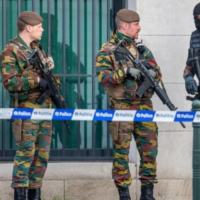Brussels ( Brussels Morning )- grapples with escalating homelessness and drug use, exacerbated by pandemic fallout and asylum seeker challenges, particularly evident in Metro stations.
Brussels has in recent years undergone increased homelessness and drug use. At the heart of the problem are a series of overlapping social crises running from precariousness rising due to the Covid-19 pandemic and the ongoing reception situation for asylum seekers which pushed more vulnerable individuals onto the street due to the government’s failure to supply them with the shelter they are permitted to.
While civil society associations are working tirelessly to help these people, and the region is performing to tackle homelessness, the issues persist, and the effect is particularly visible in the city’s Metro stations. Open drug taking has repeatedly been caught by commuters, which has led some to regard insecure – even if drug users usually hold to themselves in most cases.
It has also resulted in more people getting pierced in station roller shutters, which can usher to serious injuries and even death, and a height in people walking on the tracks illegally. Brussels Mobility Minister Elke Van den Brandt was interviewed about the situation in several STIB stations during the Mobility Committee of the Brussels Parliament. The meeting concentrated on current and future operations in Metro stations.
Van den Brandt commented there are around ten to 12 stations in the area where the presence of drug addicts and homeless individuals is a particularly big concern, based on the analysis of STIB’s patrolling units. “The situation is serious,” she stated, according to reports by Sudinfo.
“In 2023, more than 11,000 incidents were registered by the Security dispatchers, including around 7,000 due to the existence of homeless people and 4,000 due to the presence of drug addicts.” In addition, STIB acquired 969 complaints from commuters about “the existence of homeless people and drug addicts”, a 66% growth compared to 2022.
STIB’s teams emphasised that the stations Yser, Brussels-Midi, Ribaucourt, Porte de Namur, Botanique, Bourse, Anneessens, Hôtel des Monnaies, Trône and Parc are most frequently affected by the phenomena. But this list grows according to what is followed week by week. She counted that there are patrols in place seven days a week, focusing on the most problematic areas of the STIB network. However, their capabilities to intervene are limited and often rely on calling in the police.
The Brussels-Capital Region Government affirmed it would grant STIB extra funds to further improve safety in Metro stations. Using these reserves, an extra 20 security guards are in the procedure of being hired and a new STIB team will be set up to evaluate and direct drug addicts and homeless people towards the most appropriate reception, care and housing centre for their specific needs.
The company is also concerned with the SubLink project, bringing together several companies to take action in problem locations from a social and security procedure. Van den Brandt noted that the task has shown good results in recent months. In the Merode metro station in Etterbeek, STIB extended designated areas for homeless and drug-dependent people. Finally, STIB is also positioning up its mobile emergency squads in the second half of 2024, which are anticipated to be fully operational in September.



